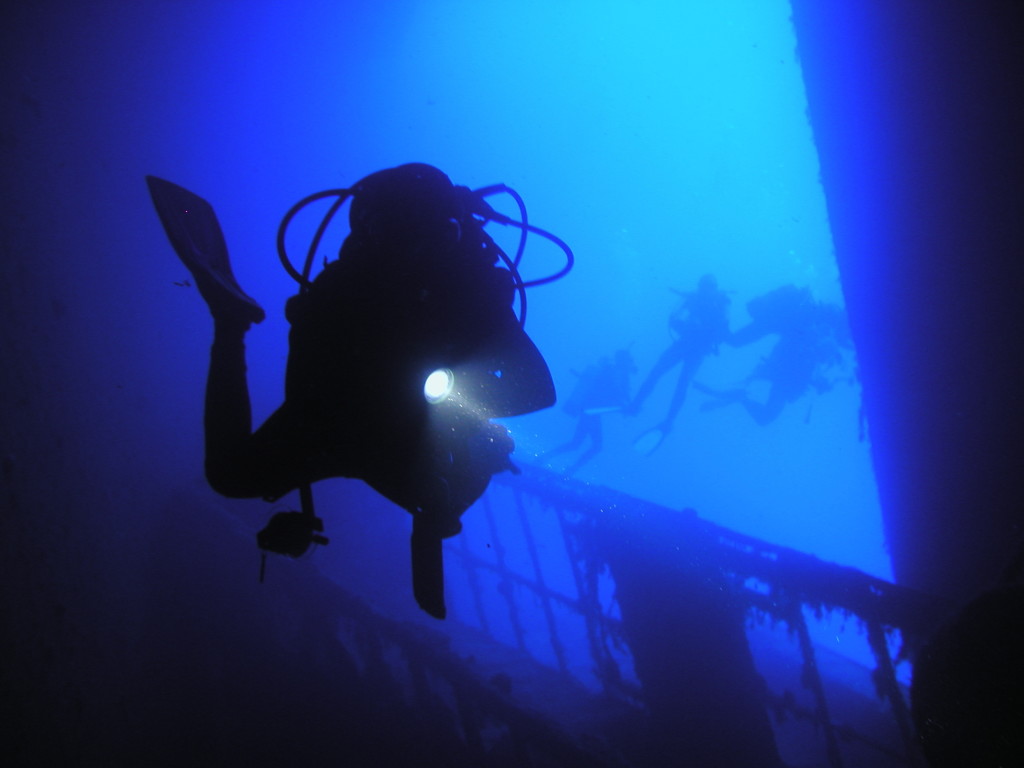Of course there’s standard gear for every dive: wetsuit or drysuit (or simply a rashguard if you’re in very warm waters), tank, BCD, regulator, fins and mask. Add a bit of personal gear, such as a camera, and on most dives that’s pretty much all you’ll need. But certain types of dives or those with a specific purpose call for specific pieces of equipment that you wouldn’t normally bring.
Wreck Diving
In this series of articles, we’ll help you put together checklists for various types of dives, this time for wreck diving.
Gloves
Ships are often made of steel, and when submerged — especially in saltwater — they rust. This, combined with damage from their sinking and general wear and tear, means that wrecks often contain sharp, exposed edges that you could easily cut yourself on. And because of the rust, a cut can very easily become infected. So if you’re exploring, especially inside a wreck (with proper training), you may find yourself touching surfaces, particularly if you use the popular pull-and-glide technique. Wrecks can be traps for jellyfish, catching their poisonous tentacles on the structure, so you also risk stings from these. Wearing gloves protects your hands, so wear them even if you’re diving in warm water where you wouldn’t normally need them. Even a pair of thin gardening gloves can be enough to offer that little bit of protection you need.
Exposure protection
You might want to consider wearing a bit more exposure protection that you normally would when wreck diving. If you’re diving in warm weather, a shorty might seem adequate, but if you accidentally brush the side of the wreck, you run the same risk of cuts and burns mentioned above. So a thin, full-body wetsuit can be very helpful.
Dive torch
If you’re venturing inside a wreck, regardless of whether you stick to the light zone, or if your training allows you to venture deeper, you’ll need a dive torch to light up the dark corners. And even if you stick to the exterior, a dive torch will illuminate portholes so you can see what’s inside. If you’re penetrating a wreck, make sure you also bring at least one backup light, and preferably two.
Line reel
If you need to measure the wreck, a line reel is a great tool, but if you’re venturing inside the wreck, a line reel is an absolutely essential piece of gear to help you find your way back to the entry point. In very low visibility, a line reel attached to the shot line (or anchor line) will guide you back to your boat.
Redundant air source
Again, if you’re venturing into that wreck, a redundant air source is a good idea. If you’re sticking to the light zone, a pony bottle or a Spare Air can be enough, but if you’re heading deeper into the structure, a full double set, with two full tanks and separate first stages, is the right choice.


